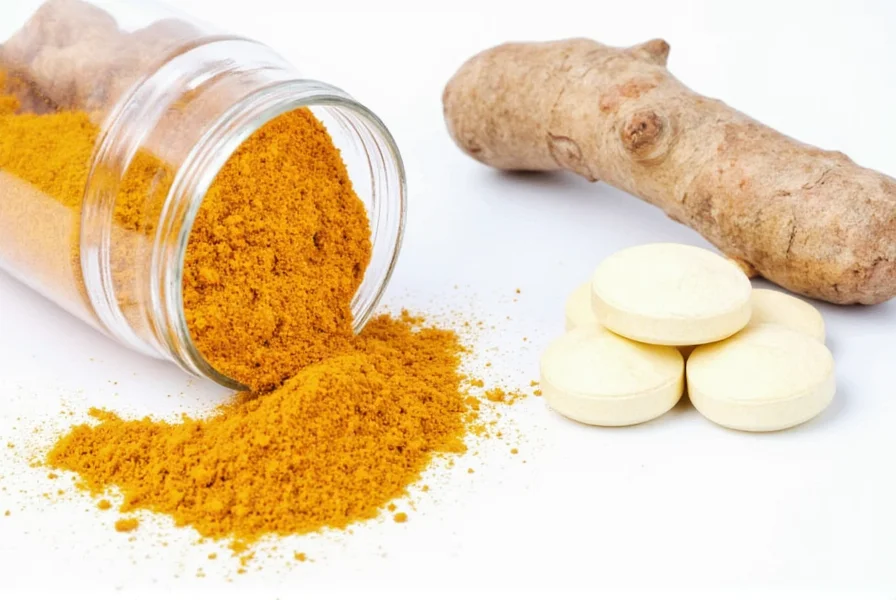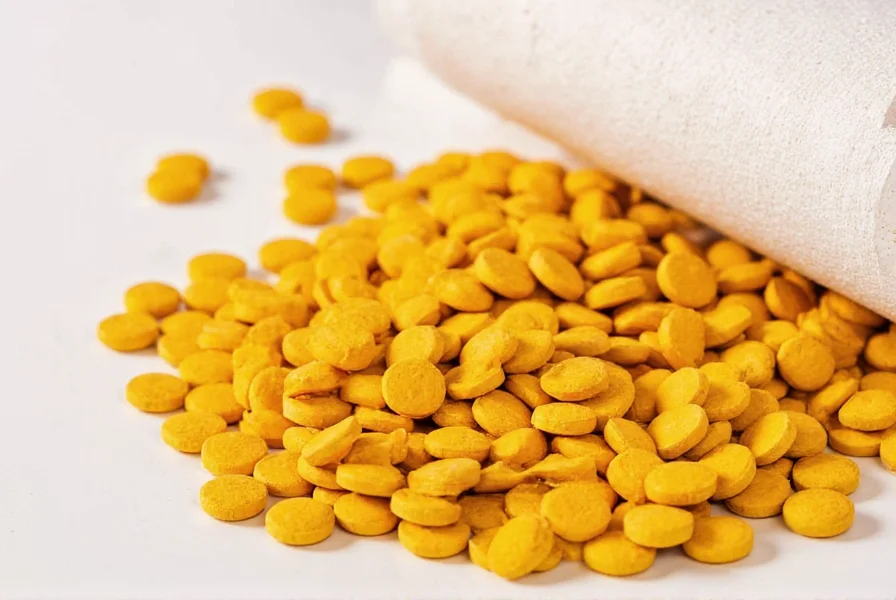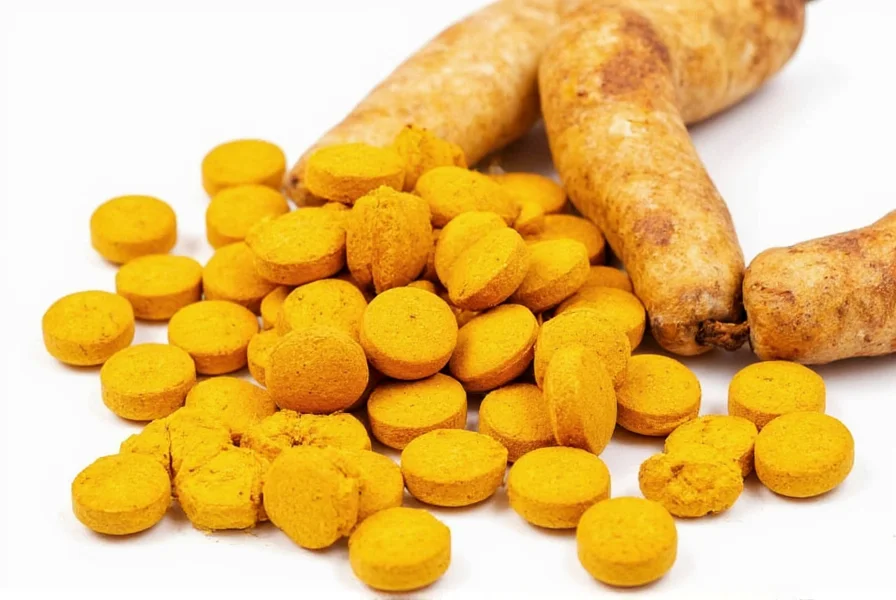Turmeric tablets have become one of the most popular dietary supplements worldwide, driven by growing scientific interest in curcumin's potential health benefits. Unlike culinary turmeric powder which contains only 2-8% curcumin, quality supplements provide standardized extracts with significantly higher concentrations of this bioactive compound. However, not all turmeric tablets deliver equal benefits due to differences in formulation, curcumin concentration, and bioavailability enhancers.
Understanding Turmeric Tablet Composition
Turmeric tablets typically contain either whole turmeric root extract or purified curcuminoids. The most effective formulations standardize for curcumin content, usually between 95% curcuminoids. Since curcumin has poor bioavailability on its own, many quality supplements include absorption enhancers such as piperine (from black pepper), lipids, or phospholipid complexes. When evaluating turmeric tablets for inflammation support, check for both curcumin concentration and bioavailability technology.

Scientific Evidence Behind Turmeric Supplements
Over 30 clinical trials have investigated curcumin's effects on inflammatory conditions. A comprehensive 2022 meta-analysis published in Nutrients concluded that standardized curcumin extracts (typically 1,000 mg daily) demonstrated significant reductions in inflammatory markers compared to placebo. Research particularly supports turmeric tablets for joint pain relief in osteoarthritis, with multiple studies showing comparable effectiveness to NSAIDs but with fewer gastrointestinal side effects.
However, it's crucial to understand that not all health claims about turmeric are equally supported. While evidence for anti-inflammatory effects is strong, research on cognitive benefits, heart health, and other potential applications remains preliminary. The best turmeric supplement with black pepper (providing piperine) typically shows 20-fold increased absorption compared to standard curcumin alone.
Dosage Guidelines and Usage Recommendations
Determining the right dosage depends on your specific health goals and the product's formulation:
| Health Goal | Recommended Daily Dose | Formulation Consideration |
|---|---|---|
| General inflammation support | 500-1,000 mg curcumin | With bioavailability enhancer |
| Joint pain management | 1,000-1,500 mg curcumin | Dual-dose regimen preferred |
| Post-exercise recovery | 250-500 mg curcumin | Take within 1 hour of activity |
Most research uses divided doses (morning and evening) rather than single daily doses. For optimal results with standard curcumin, take turmeric supplement dosage guidelines seriously and allow 4-8 weeks for effects to manifest. Consistency matters more than extremely high single doses.
Safety Profile and Potential Interactions
Turmeric tablets are generally well-tolerated at recommended doses, but turmeric tablets side effects can include mild digestive upset in sensitive individuals. More importantly, curcumin may interact with certain medications:
- Anticoagulants (blood thinners) - curcumin may enhance effects
- Diabetes medications - may potentiate blood sugar lowering
- Chemotherapy drugs - potential interactions require medical supervision
Individuals with gallbladder issues should consult a healthcare provider before using high-dose curcumin supplements. Pregnant and breastfeeding women should avoid therapeutic doses unless under medical supervision.
Choosing Quality Turmeric Supplements
Not all turmeric capsules vs powder products deliver equal value. When selecting a turmeric tablet, look for:
- Standardized curcumin content (minimum 95% curcuminoids)
- Third-party testing verification (look for NSF, USP, or ConsumerLab seals)
- Bioavailability enhancement method clearly stated
- Transparent ingredient listing with no unnecessary fillers
- Manufactured in FDA-registered facilities following GMP standards
Avoid products making exaggerated health claims or promising immediate results. Reputable manufacturers will reference scientific studies rather than making absolute cure claims. The how much curcumin in turmeric tablets question matters - effective products typically contain 250-500 mg of standardized curcumin per dose.

Realistic Expectations for Turmeric Tablet Benefits
While turmeric tablets show promise for certain health concerns, they're not miracle cures. The strongest evidence supports their use for managing inflammation and joint discomfort, particularly when using high-quality, bioavailable formulations. Effects are typically subtle and develop gradually over weeks rather than days.
For best results, incorporate turmeric tablets into a comprehensive approach that includes proper nutrition, regular exercise, and other evidence-based health practices. Remember that supplements complement but don't replace medical treatment for diagnosed conditions.
Frequently Asked Questions
How long does it take for turmeric tablets to work for inflammation?
Most clinical studies show measurable reductions in inflammatory markers after 4-8 weeks of consistent daily use at appropriate doses (typically 1,000 mg of standardized curcumin extract). Some individuals report noticing joint comfort improvements within 2-3 weeks, but full effects generally require a month or more of regular supplementation.
Can I take turmeric tablets every day?
Yes, turmeric tablets can be taken daily within recommended dosage ranges (typically 500-2,000 mg of curcumin extract). Long-term studies up to 6 months show good safety profiles at these doses. However, individuals with specific health conditions or taking certain medications should consult their healthcare provider before starting daily supplementation.
What's the difference between turmeric and curcumin supplements?
Turmeric refers to the whole spice containing approximately 2-8% curcumin by weight, while curcumin supplements contain concentrated extracts standardized to 95% curcuminoids. Turmeric tablets for inflammation typically use curcumin extracts because the low concentration in whole turmeric makes therapeutic dosing impractical through dietary consumption alone.
Should turmeric tablets be taken with food?
Yes, taking turmeric tablets with a meal containing healthy fats significantly improves absorption. Curcumin is fat-soluble, so consuming it with foods containing oils, avocado, nuts, or other fats can increase bioavailability by up to 700%. This is particularly important for standard curcumin formulations without specialized absorption technology.
Do turmeric tablets help with arthritis pain?
Multiple clinical trials demonstrate that standardized curcumin extracts (1,000 mg daily) can significantly reduce arthritis pain and improve joint function, with effects comparable to some NSAIDs but with fewer gastrointestinal side effects. The does turmeric help with joint pain question has substantial scientific support, particularly for osteoarthritis, though individual responses may vary.











 浙公网安备
33010002000092号
浙公网安备
33010002000092号 浙B2-20120091-4
浙B2-20120091-4